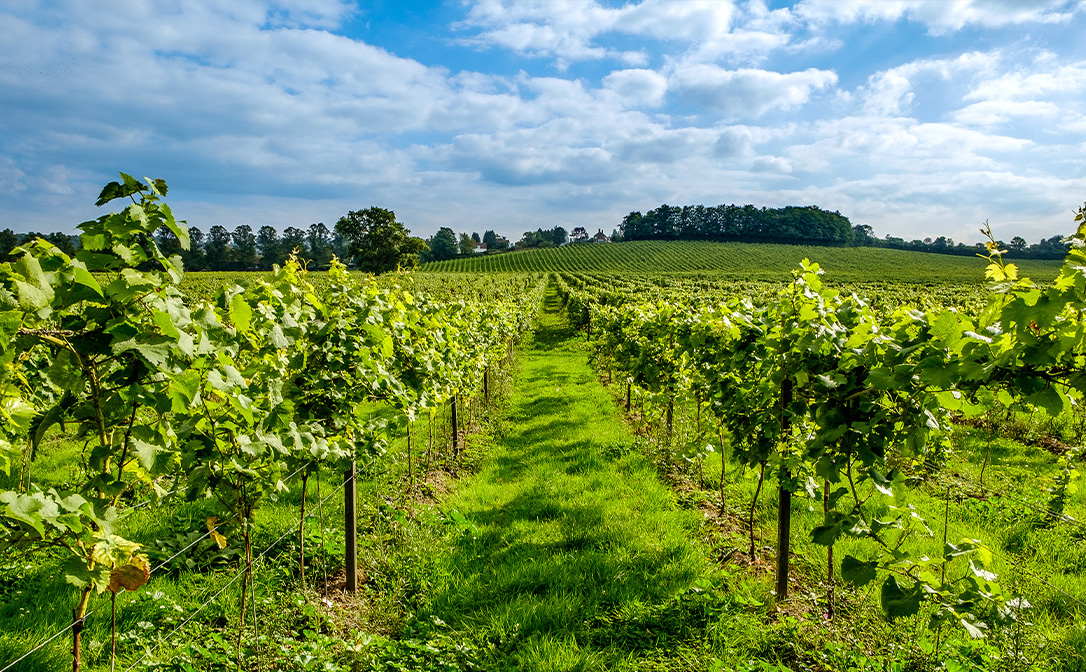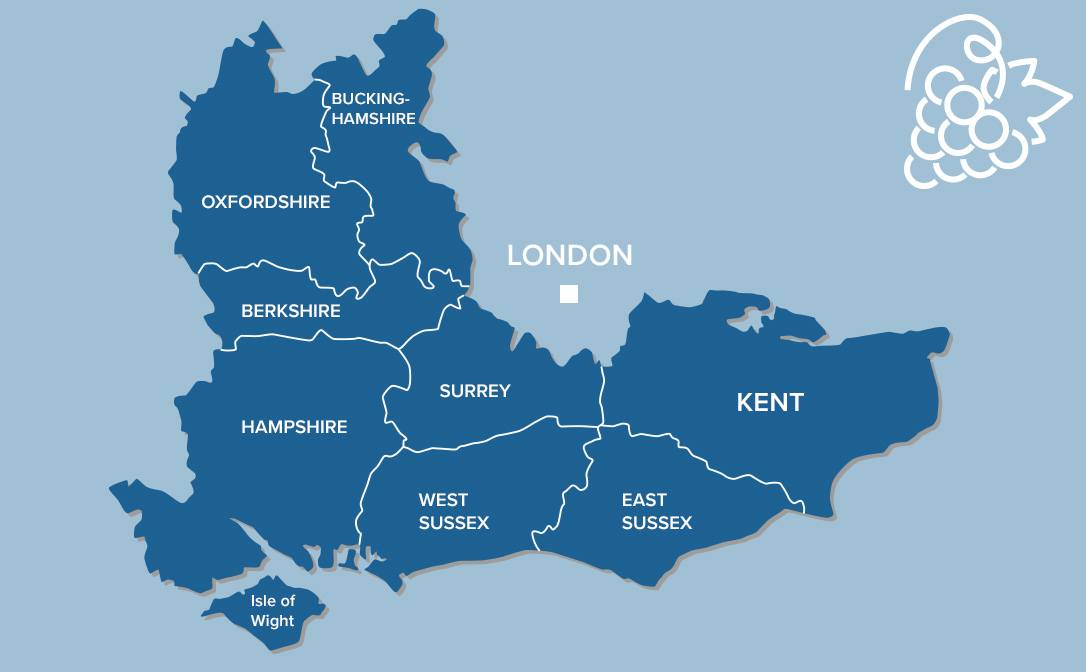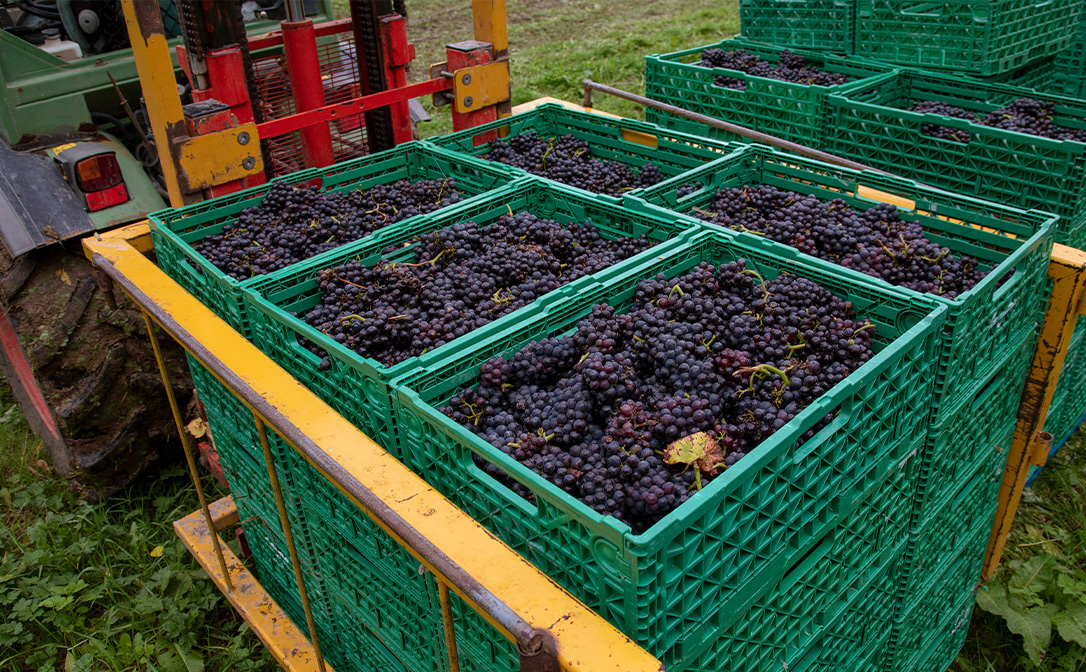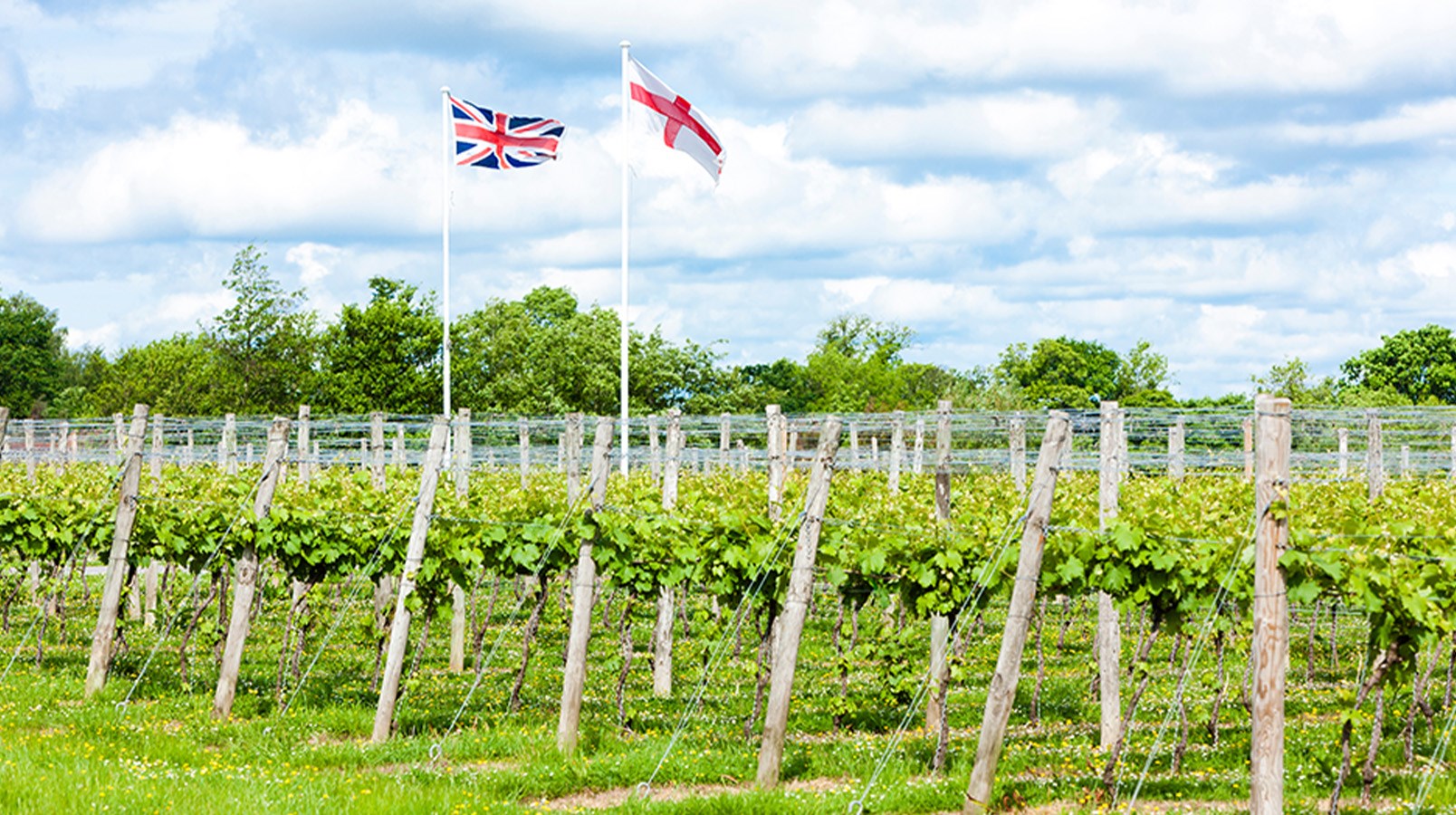When the words ‘English’ and ‘wine’ were first put together, many in the wine trade grimaced, or even worse - laughed. The UK has long been one of the largest importers of wine in the world, but make wine? Surely not.
Fast forward to 2022 and it’s a different story. England and Wales are beginning to produce some of the most outstanding sparkling wines on the international market, and are making strides in elegant white wines, refreshing reds and a whole host of other characterful and complex styles.
Keen to learn more about the English and Welsh wine industry in more depth? Watch our recent webinar on Great British Wine Industry. Tap here.
English wine production in England and Wales
Wine regions in the UK typically sit between 51-53°N. This is beyond the 30-50° north and south latitude which was typically considered suitable for growing grapes for high-quality wine production.

Vineyards in Surrey, UK
As the climate is changing, viticulture is becoming viable closer to the poles, however, reliability is a word rarely associated with English yields. Despite year-on-year increases in temperatures, even the warmest regions have a very cool climate. This, coupled with a distinct increase in the occurrence of “extreme” weather events such as hail and frost (the industry is a victim of climate change almost as much as a beneficiary) contributes to 'intriguing’ and often jeopardised harvests.
Yet, there are concrete benefits to growing grapes for wine production at this latitude. There are long daylight hours over the growing season which allows for slow ripening, giving time for complex aromas and flavours to develop. Also on some of the sites, there are soils with high chalk and greensand content (dark greenish coloured, glauconite-rich sand). This provides a perfect balance of water retention and drainage during frequently wet periods.
Beyond natural influences on the vineyards, the UK is culturally well established to produce wine. Visit almost any supermarket in the UK and you will find wines from France, Italy, Chile, New Zealand, South Africa, the USA and beyond. The British people love wine and have a varied palate – and their winemakers are no exception.
The current winemaking landscape in the UK
English and Welsh vineyards cover just 3,800ha – that’s almost a tenth the size of Champagne, and about the same size as one of France’s smallest wine regions, the Northern Rhône.
Though small, the UK industry is growing at a rapid rate – investment has come from around the world, including several prestigious Champagne houses. The last five years have seen a 70% increase in total plantings, and that number is still climbing.
Exports rose by 51% in 2020, despite the pandemic. The wine world can sometimes feel slow and sedate - here, things are moving fast.
Where are the wine regions in the UK?
Regions in the Southeast have developed a global reputation for high-quality wines. Including Sussex, home to perhaps the most established premium producer Nyetimber (and now the owner of Protected Designation of Origin (PDO) status), and Kent, home of esteemed producers Gusborne and Taittinger’s Domaine Evremond.

The southeast of England produces the vast majority of English wine
Wine, however, is being made across England and Wales. Ed Dallimore’s book ‘The Vineyards of Britain’ documents over 140 vineyards as far north as York, east as Essex, west as Cornwall, and south as Dorset! It also includes a small but mighty selection of Welsh vineyards in Pembrokeshire, Monmouth and beyond.
Aside from the larger, more famous producers who are bringing English wine onto the world stage, the UK wine scene is also populated by many smaller, artisan producers. Winery and vineyard visits are thus a vital part of the UK wine economy and as a result, the doors are generally open in wineries big and small, for the trade, enthusiasts, the uninitiated and the curious.
What grape varieties are being grown in the UK?
Most plantings are dominated by the classic French varieties Pinot Noir, Chardonnay and Meunier. Meunier often performs brilliantly – making high-quality still and sparkling wine, both white and rosé. Plantings of these grape varieties specifically for still production are on the rise.

A Pinot Noir harvest in Kent, UK
There are many other varieties to discover too – hardy, German grape varieties and hybrids such as Bacchus, Seyval Blanc, Ortega, and Solaris are becoming quintessentially English grape varieties.
What styles of wine are produced in the UK?
The UK now boasts many styles of wines. Whether it is traditional method sparkling wine, still reds, whites, rosés or even sweet wines – there is a large scope of variety.
Richard Morris of Ancre Hill in Wales, for example, makes orange wine from skin macerated Albariño. Langham Estate produces col fondo, which does not require riddling and disgorgement, in a keg – making a complex sparkling wine that is both sustainable and affordable.
Tim Wildman MW is tracing heritage varieties in “lost vineyards” of the UK to make his “Lost in a Field” pet nat.
Did you know pet nat or Pétillant-Naturel (natural sparkling) is the term used to describe any sparkling wine made via the Méthode Ancestrale? This means that the wine is bottled before the first fermentation is complete without the addition of any extra sugars or yeasts. You can find out more about this on the Level 4 Diploma in Wines.
These styles are bringing new audiences to wine and are ‘cool’ in all senses of the word. Whether you’re interested in age-worthy fine wine or looking to see what’s new - the UK is currently an exciting place to imbibe!
This article was written with help from Anjali Douglas DipWSET, Tastings and Events Manager and Wine Educator, WSET School London. Special thanks to WineGB for some of the data and information provided.
Related content:
- Behind the grape: Chardonnay in the US
- Understanding grapes: spotlight on Riesling in Germany
- Discovering Vranec and North Macedonia


